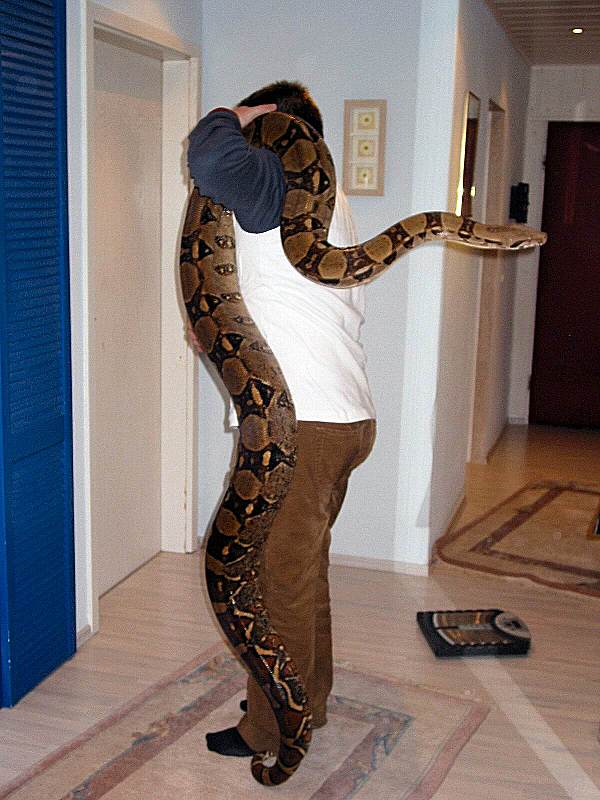

Make sure the enclosure locks securely and inspect it regularly to ensure that your snake can’t wiggle out of a gap or past a weak point in the cage. Keep snakes in a separate room if at all possible. This will stress out both animals and can result in injury to either animal. If you have a boa constrictor and other small animals, make sure they do not interact at any point.Įven if your snake doesn’t view your other pets as food, it will likely see them as a predator. Boas will try to eat anything that they can fit in their mouth. Smaller pets like birds, rodents, and small dogs are at risk from a loose or unsupervised boa constrictor. This results in a loose animal that may bite when it is found. Many inexperienced or poor snake keepers underestimate how strong a snake is and may use small weights or tape to try to keep their snake in. Snakes are much stronger than you would think and can force open the cheap mesh tops used to convert aquariums into enclosures. Most other reports of injury from any snake species have another common thread of poor enclosure security. Even a newborn is too large since the average birth weight for a healthy baby is 7.5 pounds. Humans are just too large to register as prey. Poor husbandry and illness result in strikes from a defensive snake. Most other stories follow a similar trajectory. Boa constrictors are not aggressive animals, they can be defensive while young or injured. Most reports of injury are caused by improper handling, neglect, or flat-out abuse. This can be reduced if you take the time to handle your snake and train it so it is comfortable around your whole body. Overall, most boa constrictors don’t pose a serious threat to humans. In contrast, the green anaconda has been known to eat jaguars and the reticulated python has been found to eat deer. You should also keep any other pets out of the room your snake lives in, for both of their safety. While small pets are at risk, keeping your boa in a secure enclosure and feeding it properly will help.

This puts even babies outside of a boa constrictors prey size. This means even a huge female likely isn’t eating anything larger than 4 pounds.

Your pet boa constrictor can’t eat anything much larger than the widest part of its body or about 10% of its body weight. Reticulated pythons and green anacondas both hunt much larger prey than any boa will. In contrast, boa constrictors rarely top 12 feet and rarely weigh more than 40 pounds even for a massive female. Large snakes are both long and heavy, like the green anaconda ( Eunectes murinus) or the reticulated python ( Python retuclatus).īoth of those snakes can top 19 feet long and weigh hundreds of pounds for adult females. The other species of true boas, Boa imperator and Boa sigma tend to stay under 7 feet in length.Įven the largest subspecies is still considered to be a medium-sized snake. Some subspecies of boa constrictor can reach over 10 feet, like the common B. While they can bite, most cases of serious injuries are from neglected, sick, or stressed snakes who hit a sensitive area. Since some subspecies can reach 12 feet long, you may be wondering:Īs pets, Boa Constrictors are not much more dangerous than any other medium-sized snake.
#Boa constrictor imperator feeding size chart full
Some subspecies and full species have been in the pet trade for so long that you can find an animal in nearly any color or pattern you could want. The boa constrictor ( Boa constrictor) and other members of the Boa genus are popular pet snakes and generally easy to care for.


 0 kommentar(er)
0 kommentar(er)
